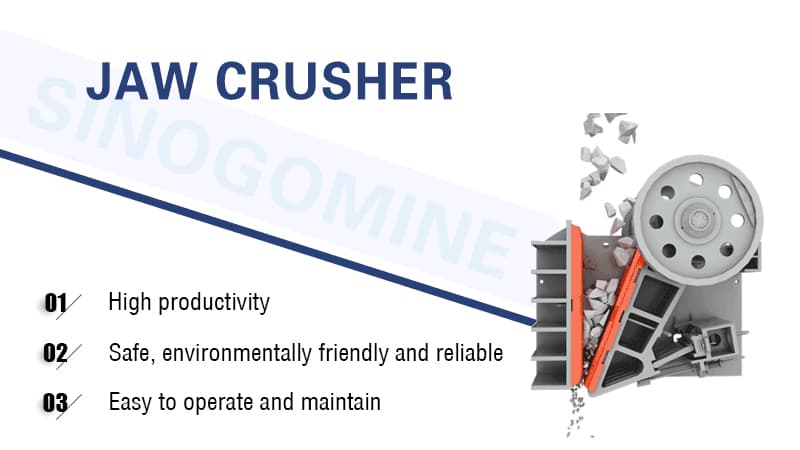How To Improve Production Efficiency Of Jaw Crusher?
After the stone is mined out of the mountain after blasting, it cannot be put into use immediately. First of all, it needs to be further processed and crushed to make the stone into usable specifications. Crushing also has several processes, and the first crushing is often called primary crushing. Gyratory crusher and jaw crusher are both more common primary crushing equipment. Gyratory crusher has the advantages of high production capacity and low unit energy consumption, but it also has defects such as complex structure, high price, and complex installation and maintenance. In comparison, jaw crusher is more widely used.
Jaw crusher is known as "tiger mouth" in the industry because of its powerful crushing ability. Jaw crusher can be used to process materials such as granite and quartzite with high hardness and strong abrasiveness, and can also be used to process limestone with average hardness. In addition, jaw crusher also has the advantages of large output, easy configuration, and convenient maintenance. It is precisely because of the many advantages of jaw crusher that it is widely used in the industry.
Jaw crushers have excellent performance, but just as swords need to be wiped frequently to remain sharp, jaw crushers also need more maintenance to ensure that the machine can be used for a long time and well, and production can be smoother. So, what aspects should be paid attention to during the production process to ensure long-term stable output of jaw crushers, reduce costs, and improve production efficiency?


1. High moisture content or high viscosity of materials
During operation, if the moisture content of the material is high, the material will stick to each other and block the jaw plate of the crushing chamber after being crushed into small pieces, resulting in material jamming. If the material is mixed with sticky soil, the material will be stuck in the crushing chamber, resulting in material jamming. In the long run, this will affect production efficiency and cause rust on the jaw plate.
Therefore, before production, the material can be screened by a vibrating screen or vibrating feeder, and the material can be dried with the help of natural wind or light to reduce the moisture and viscosity of the material.
2. Feeding method
Mainly focus on the feed particle size, feed amount and discharge port.
If the size of the material exceeds the specified particle size, it is easy to block the machine cavity. Each blockage will cause a long shutdown of the equipment. Therefore, the particle size of the material should be strictly controlled.
In production, if the feed is too much and exceeds the crushing capacity of the jaw crusher, blockage will also occur. The working principle of the jaw crusher is semi-rhythmic work. If too much material is put in, the material cannot be crushed in time, and the crushed material cannot be discharged in time and effectively, resulting in jamming. Therefore, in the production process, the material should be fed strictly according to the requirements, not too little but not too much, to ensure the normal and stable operation of the jaw crusher.
The occurrence of jamming may also be due to the fact that the discharge port is too small, the crushed material cannot be discharged in time, and it accumulates in the crushing chamber, causing jamming. This requires attention to the effective combination of discharge and feeding, and timely adjust the size of the discharge port according to the feeding situation to ensure that the crushed material can be discharged from the discharge port in time.
The daily life of the jaw crusher is "hard against hard". In the production process, it is necessary to pay attention to the maintenance and replacement of important components in a timely manner, and to arrange production scientifically and reasonably, so that the jaw crusher can output stably for a long time, reduce costs, and improve production efficiency.




 Send Email
Send Email Get Price List
Get Price List